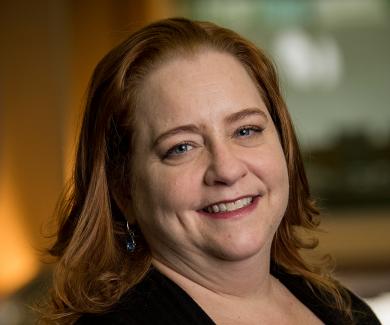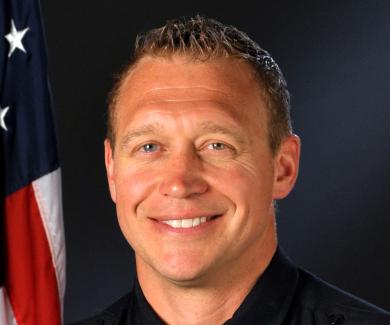Law Enforcement With a Public Health Lens
"We're not going to solve violence by arresting everyone."
Last year, law enforcement’s reckoning reached a crescendo. The deaths of Breonna Taylor, George Floyd, and other people of color at the hands of police forced an examination of profound problems within law enforcement, including structural racism. It’s also led to a reassessment of how policing itself is conducted and prompted new visions for more effective ways to reduce gun violence.
Can public health help address these problems?
Of nearly 30 Bloomberg American Health Initiative student fellows working on violence prevention, several are working in or with police departments to apply public health strategies to reduce bias and mistrust, support communities, and ultimately save lives. Here are three of their stories.
Violence reduction requires committed resources
Martin Bartness, a Baltimore police deputy chief, has seen violence reduction programs come and go during his 24-year career. What usually holds them back is a lack of committed social supports—such as counseling, substance abuse treatment, and job training—that can help individuals avoid committing crimes. That includes how funds are allocated by both the city and police.
The challenge is making that partnership work.
To start, police must adopt a “first, do no harm,” approach, Bartness says. Then, with appropriate data, they can “reach beyond policing to promote shared responsibility for the social ills that are too often seen exclusively through the narrow lens of the criminal justice system.”
Bartness points out two new BPD efforts doing just that. This summer, the department began a pilot program diverting behavioral health-related 911 calls from police to a 24-hour hotline staffed with clinicians. Additionally, if the calls involve immediate public safety issues such as weapons or threats, the first officers sent to the scene are specially trained in crisis intervention.
While it’s too early to see the impact of the 911 call diversions on gun violence, the special officers have been able to deescalate most situations until further help arrives, Bartness says.
“This is a wise use of resources because it allows police to focus only on matters for which they are trained and equipped to respond,” he says. “And it connects callers with professionals who can meet their needs.”
Collaboration works everywhere
The majority of research on gun violence reduction not only comes from studies conducted in the country’s biggest police departments, but focuses on strategies for large urban agencies, says Kelly Burke, senior program manager at the International Association of Chiefs of Police. The problem? Those agencies represent a fraction of the more than 18,000 police departments across the country.
“It’s hard to inspire smaller agencies with a program that’s been evaluated out of NYPD—they just don’t relate,” Burke says.
So, from 2016 to 2020, Burke led the Collective Healing Initiative, a project to showcase how—whatever the size and location—police departments can develop, implement, and assess evidence-based strategies to reduce violence and restore police-community relationships.
Burke’s team provided training and support to law enforcement in Baton Rouge, Louisiana; Oakland, California; Houston, Texas; Minneapolis, Minnesota; and Rapid City, South Dakota, as each rolled out a bespoke set of community-level interventions. These included building violence-interrupting street teams, establishing partnerships with local social service organizations, and conducting public listening sessions for police and citizens.
Participants say the program helped them ensure protests in their communities were mainly peaceful, while protests turned violent elsewhere. And, before the pandemic, some were beginning to notice reductions in violent crime rates. Baton Rouge, for example, saw firearms-related crimes fall 13% from 2017 to 2019.
Burke and her team are now developing online training for small, rural, and tribal police agencies to help them incorporate evidence-based crime reduction practices into their operations.
Police are only one part of the puzzle
Like many U.S. cities, Rapid City, South Dakota, has seen an increase in gun violence. Its police officers responded to 74 aggravated assaults using firearms and six gun-related homicides in 2020 in the city of about 70,000, up from 43 assaults and three homicides in 2019.
The Rapid City Police Department is reevaluating its role in responding to such situations, which often involve health issues like substance abuse or homelessness, says Chief Don Hedrick. “We need to take a step back and try to bring experts in these fields to the point of intervention with us.”
Last year, the department hired two community liaisons, Jamie Kirsch and Tyler Read, with strong relationships in multiple high-crime areas. In addition to organizing monthly roundtables with the police, housing groups, and other neighborhood leaders, Kirsch and Read devise ways to foster trust and healing where people have not traditionally had faith in law enforcement.
For example, after a shooting earlier this summer, Read—an artist by trade—helped neighborhood members, together with police, put on a positive, anti-violence-themed event. Afterwards, the department started receiving calls for service from that neighborhood—a nearly unprecedented occurrence. “It built trust and encouraged folks to call us,” says Hedrick.
“We’re not going to be able to solve violence by arresting everyone,” he says. “It’s not just a criminal justice issue, it’s a community issue. We need to involve others.”



